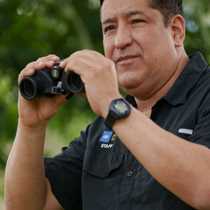Isabela Island
The Giant tortoises of the Galápagos Islands were unfortunately overexploited for a long period of time, especially because of their remarkable characteristic of being able to survive without eating or drinking for months at a time. For these antediluvian-looking critters, this particular fact was undoubtedly fatal. They were massively transported to the ships and placed in storage for future food supply for the long navigations to come. Unfortunately, several populations of giant tortoises were brought to extinction because of this, and many others were drastically reduced in numbers.
In order to partially repair the damage that we had caused to these majestic reptiles, the Charles Darwin Research Station together with the Galápagos National Park Service started an amazing program. This consists of the incubation, rearing and repatriation of baby giant tortoises to the wild. Two repatriation centers have been established on the archipelago for this purpose. Today we visited the one located on the island of Isabela. This place is simply fascinating, and it is dedicated completely to the caring of the different subspecies and subpopulations of Isabela Island, the largest in the archipelago.
It is sincerely remarkable the titanic efforts that have been made to try to recover the populations of giant tortoises. Little by little, scientists, wardens, involved members of the local community, environmentalists, and even nowadays the tour operators, are all helping to restore the long lost tortoises’ dynasty on the archipelago.
The Giant tortoises of the Galápagos Islands were unfortunately overexploited for a long period of time, especially because of their remarkable characteristic of being able to survive without eating or drinking for months at a time. For these antediluvian-looking critters, this particular fact was undoubtedly fatal. They were massively transported to the ships and placed in storage for future food supply for the long navigations to come. Unfortunately, several populations of giant tortoises were brought to extinction because of this, and many others were drastically reduced in numbers.
In order to partially repair the damage that we had caused to these majestic reptiles, the Charles Darwin Research Station together with the Galápagos National Park Service started an amazing program. This consists of the incubation, rearing and repatriation of baby giant tortoises to the wild. Two repatriation centers have been established on the archipelago for this purpose. Today we visited the one located on the island of Isabela. This place is simply fascinating, and it is dedicated completely to the caring of the different subspecies and subpopulations of Isabela Island, the largest in the archipelago.
It is sincerely remarkable the titanic efforts that have been made to try to recover the populations of giant tortoises. Little by little, scientists, wardens, involved members of the local community, environmentalists, and even nowadays the tour operators, are all helping to restore the long lost tortoises’ dynasty on the archipelago.




